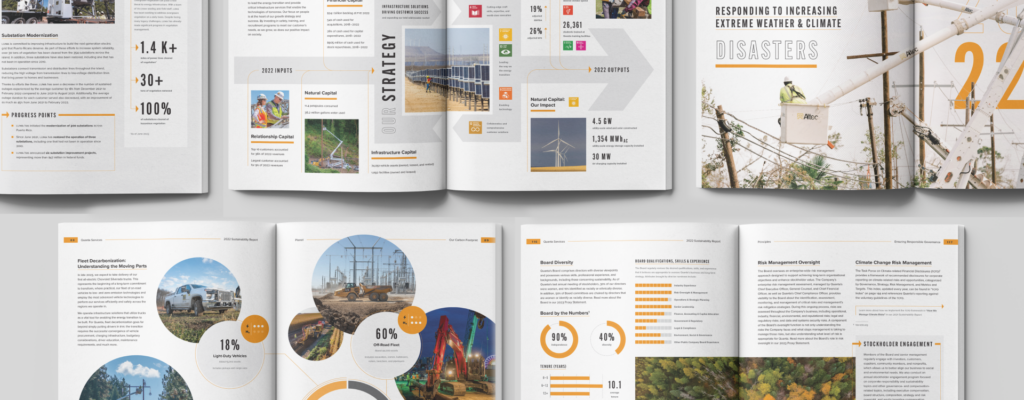In the rapidly changing corporate sustainability landscape, it is no longer enough for companies to simply check off environmental requirements. Rather, they must now craft a powerful narrative that resonates with stakeholders on multiple levels. As companies prepare for their 2024 planning, it is imperative that they integrate employee engagement programs into their sustainability initiatives to truly demonstrate their commitment to creating a better world.

The Strategic Imperative of Employee Engagement
Engaging employees is a vital aspect of achieving sustainability goals. It is not merely a checkbox to tick off, but a strategic imperative that can redefine a company’s success and longevity. The advantages are significant and far-reaching, ranging from collective impact and innovation to retaining employees and attracting talented individuals. Below are four reasons why integrating employee engagement into your sustainability and ESG roadmaps is crucial.
1. Collective Impact:
Employees are undeniably the driving force behind any organization. Their collective actions, especially when engaged in sustainability initiatives, have the power to create significant positive impacts. Every small step an employee takes contributes to a larger, more meaningful change. In today’s evolving landscape of sustainability reporting, there is a growing emphasis on extending our understanding beyond direct emissions.
As Scope 3 reporting gains prominence, it becomes increasingly evident that employees play a crucial role not only in the organization’s internal workings but also in influencing emissions throughout the broader value chain. Their sustainable habits, whether in commuting, travel, supply chain choices, or waste reduction, contribute to a holistic and accurate representation of the organization’s environmental impact. Thus, engaged employees’ collective impact is magnified, aligning seamlessly with the rising importance of Scope 3 reporting in the comprehensive evaluation of a company’s sustainability efforts.
2. Innovation and Efficiency:
Employee engagement catalyzes fostering a culture of innovation within organizations. Motivated employees, driven by a commitment to sustainability, frequently pioneer creative solutions to optimize processes, reduce waste, and enhance overall efficiency. As the world faces an urgent need for climate resilience, the innovation spurred by engaged employees takes on an even greater significance. The imperative for more affordable and scalable climate resilience solutions underscores the importance of these creative endeavors.
Employee-driven innovations benefit the environment and contribute to improved resource management, aligning seamlessly with the pressing need for practical and scalable solutions to address the challenges posed by climate change. In pursuing sustainability, the urgency for innovative and efficient practices is not just a business imperative; it’s a global responsibility that engaged employees can actively contribute to through their inventive solutions.
3. Enhanced Company Reputation:
A positive corporate reputation concerning environmental responsibility is a powerful magnet, drawing in customers, partners, and top talent. However, authenticity and transparency are paramount in an era where greenwashing marketing tactics abound. Implementing authentic, measurable, and trackable actions safeguards the integrity of the company’s sustainability claims and reinforces its commitment to genuine environmental stewardship.
Engaged employees, as advocates for the brand, play a pivotal role in this process. Their authentic contributions become tangible proof of the organization’s dedication to sustainability, setting it apart from those who merely pay lip service to green initiatives. In the face of heightened scrutiny and discerning stakeholders, organizations benefit significantly from actions that go beyond rhetoric, establishing a reputation grounded in measurable and impactful sustainability practices.
4. Talent Attraction and Retention:
The landscape of talent attraction and retention is changing. Companies must be aware of the evolving workforce that is willing to leave organizations that don’t align with their values. This change is especially noticeable among younger workers, including millennials and Gen Z. They prioritize working for companies that share their values, especially those related to sustainability.
It’s no longer just about offering competitive salaries and benefits; attracting and keeping top talent now requires developing a workplace culture that aligns with employees’ values. Engaging employees in sustainability initiatives is crucial, as it attracts like-minded talent and enhances employee retention by creating a workplace that provides a genuine sense of purpose and belonging. Companies that proactively embrace sustainability and engage their employees in these initiatives are better positioned to attract and retain the best and brightest talent.

Integrating Employee Engagement into Annual Sustainability Reports
Employee engagement plays a crucial role not only in practice but also in reporting. Integrating the outcomes of these programs in your annual sustainability reports fosters transparency, instills trust, and meets stakeholder expectations. Below is a brief guide on why and how you should include data from your employee engagement programs in your next ESG and sustainability report.
1. Comprehensive Storytelling:
Employee engagement programs contribute to a more comprehensive sustainability narrative, and both quantitative and qualitative data bolster the efficacy of this narrative. Annual reports, traditionally focused on environmental metrics, now evolve into dynamic platforms for telling a nuanced story that goes beyond numbers. By incorporating quantitative data such as carbon footprint reductions, waste diversion percentages, and energy savings alongside qualitative data, including vivid photos and user-generated content from year-round employee engagement programs, companies can weave a more compelling and authentic tale of their commitment to sustainability.
These tangible elements bring the narrative to life, offering stakeholders a glimpse into the real-world impact of employee-driven initiatives. This multifaceted approach provides a holistic view of the organization’s sustainability efforts. It resonates deeper with audiences, fostering a genuine connection to the company’s commitment to a sustainable future. In corporate storytelling, integrating both quantitative and qualitative data becomes a powerful tool in conveying the authenticity and impact of employee engagement programs, shaping a narrative that is both informative and emotionally resonant.
2. Building Trust and Credibility:
Transparency is not just about revealing numbers; it’s about showcasing the full spectrum of employee awareness and involvement in reaching a company’s ESG or sustainability goals. When a company openly shares the results of employee engagement programs, it goes beyond mere transparency. It becomes a testament to the organization’s commitment to accountability and credibility. By including information about employees’ awareness of and active involvement in sustainability initiatives, the company demonstrates a holistic approach to its sustainability narrative.
This inclusive reporting style gives stakeholders a deeper understanding of the internal culture and the extent to which employees align with the organization’s ESG goals. It is a transparent acknowledgment that sustainability is not just a top-down initiative but a shared responsibility, which fosters a greater sense of trust with stakeholders, showcasing the company’s openness to scrutiny and its dedication to living up to its sustainability commitments. In corporate responsibility, including employee awareness and involvement data amplifies the credibility of the sustainability narrative, reinforcing the notion that the company is not just reporting on progress but actively engaging its workforce in the pursuit of shared sustainability goals.
3. Benchmarking and Goal Tracking:
Annual sustainability reports or ESG reports are valuable tools for benchmarking, tracking goals, and improving a company’s sustainability practices. By integrating employee engagement metrics, companies can further enhance the value of these reports and measure their progress over time. Employee engagement data provides valuable insights into areas for improvement and showcases the cultural evolution within the organization.
Moreover, employee engagement results help companies hold themselves accountable, align with stakeholder expectations, and foster positive employee and stakeholder relations. Transforming reports into strategic tools that incorporate the human element can help companies navigate the sustainability landscape authentically, demonstrating their commitment, transparency, and a clear path toward a sustainable future.

A Holistic Approach to Sustainability in 2024
As companies begin their planning for 2024, it is imperative to include employee engagement in their sustainability strategies. It is not merely a trend but a necessity. In addition to the environmental impact, it has a significant impact on a company’s culture, reputation, and long-term resilience. In the spirit of collaboration and transparency, let’s make 2024 the year where sustainability becomes a shared journey with employees at the forefront.
Join us at JouleBug to champion this transformative approach to corporate sustainability. Let’s empower organizations to thrive in a world where responsible business practices are not just a choice but a necessity. Together, let’s drive sustainable change and unlock the full potential of businesses to create a better future for our planet.